Factory visit to Doherty Hungary´s Orosháza plant
18 November 2013
We visited Doherty Hungary´s prize-winning production unit in Orosháza, where we could gain an insight into the every-day life of an automotive supplier relocated from Great Britain to Hungary.
Following Jim Doherty's insightful interview on the targets of the Great Campaign, aiming at the promotion of British-Hungarian business relations, we were glad to accept his invitation and see the operation of his enterprise for ourselves.
Those who have read the interview need no justification of why we felt an instant urge to travel to the company seat: we came to know an optimistic businessman with an excellent turn for business and a huge appreciation towards Hungary, whose presence and activity in the country means more than just business advantage..
Those who have read the interview need no justification of why we felt an instant urge to travel to the company seat: we came to know an optimistic businessman with an excellent turn for business and a huge appreciation towards Hungary, whose presence and activity in the country means more than just business advantage.
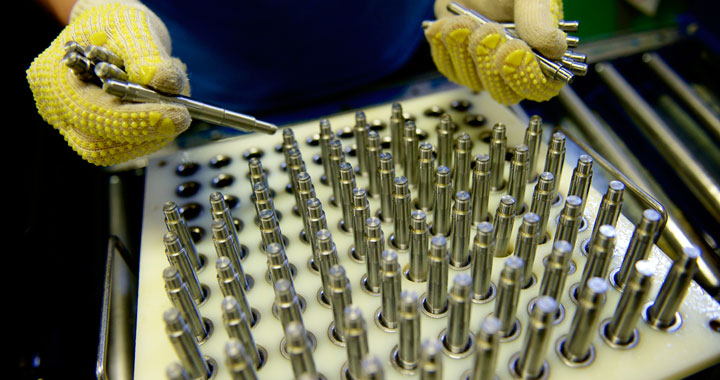
Upon our arrival, Edina Bucsai, Director of Marketing, invites us to a room where we watch a presentation on the founders of Doherty Group, the ancestors of the current CEO. It is interesting to note that Jim Doherty's grandfathers had first become acquainted through business and then became relatives.
There is a red motorcycle in the room – the company's automotive activity started with the manufacturing of the handlebar trim of this very motorcycle. Here visitors can get a picture of the precision products the company manufactures for household appliances and electric tools.
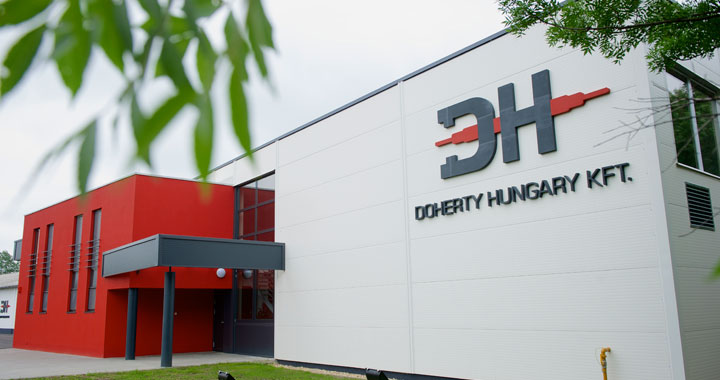
Doherty Hungary, established in 1998, started operation with a headcount of ten, and today, 148 employees work at the company's continuously developing factory. 2007 was a milestone in the history of the company, when the operation of the management saw a positive turn.
That year, Jim Doherty himself took over the management of the company. He moved to Hungary with his family, admittedly making the right decision. This is also shown by the numbers, as by 2012, the company had doubled its 2006 results, and now there are many promising prospects in sight.
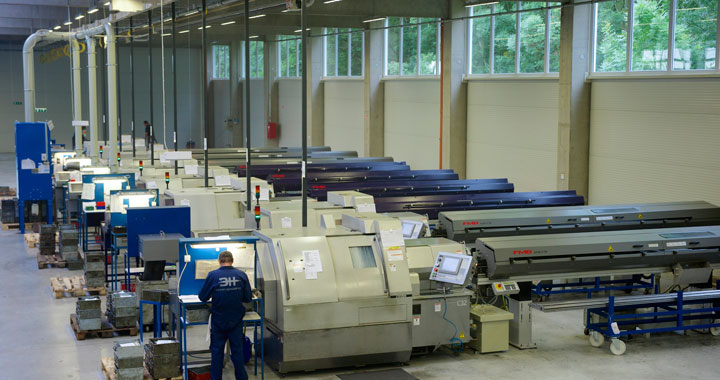
Seeing the opportunities for growth, the company decided to build a new 2,000-square-metre production hall at the company seat. which – although smaller – is much more comfortable and spacious than the existing 2,500-square-metre hall.
The design concept, exploiting the advantages of natural light, features innovative solutions, such as rain-sensitive skylights. It is not surprising then that the production hall, inaugurated this spring, has won the Production Hall Grand Prize handed out in South East Hungary. The only other production unit worthy of this price so far has been the Kecskemét Mercedes plant.
The new building comprises of two main areas. The incoming, four-metre long basic materials in bundles of 1 ton are stored on a frame system designed especially for that purpose. The corridors are also designed in a way that allows the comfortable movement of carts carrying units of such size.
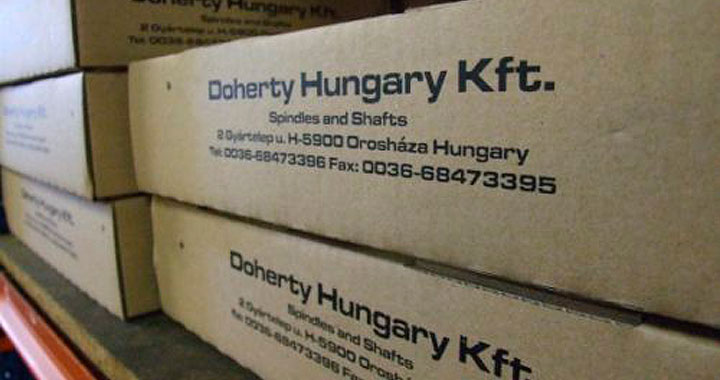
Currently, there are 27 turner's lathes and a testing machine operating in the facility, with an additional four or five workstations to be set up in the future. The pinnacle of the plant's machining activity is a six-spindle machine, the flagship of its own category.
Parts manufactured from basic materials with a diameter of 6mm to 32mm – mostly shafts, which are then prepared for additional work phases – are made here, 1,500 tons a year. We are led to the old hall, where parts are processed via heat treatment, centreless grinding and other special processes.
We meet Tihamér Puskás, who has worked at the company since the beginning, showing extraordinary expertise. He tells us about the first years at the company, his study trip to England and the many changes and developments he has encountered at Doherty. There are three employees left from the initial team of ten.
Precision shaft and spindle manufacturer Doherty has invested 4 million EUR in its site in Orosháza. The company's production volume has increased significantly in recent years: in 2006, the company booked a revenue of 985 million HUF, while in 2012, Doherty Hungary registered an income of 1.856 billion HUF.
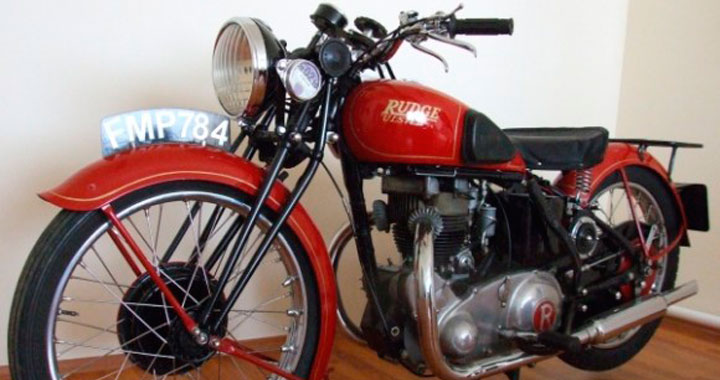
As we advance in the old hall we see the marks of rearrangement. "After we've freed up space thanks to the new production hall, we are able to make the working environment here more spacious and comfortable," points out Edina Bucsai.
They also pay attention to the workforce, then, among which we find a surprisingly high number of female workers. As we are told by HR Director Mrs Bernadett Pribék, 55 women work at Doherty Hungary, many of them qualified as dressmakers, capable of carrying out precision measurements quickly and effectively.
We pass by the quality assurance department, where products are constantly inspected, examining the quality of the work performed. The standard is high, as parts manufactured here are installed in the smaller models of Ford and Renault and also the luxury sports cars of Porsche.
Packaging is a separate field of expertise, as every customer requires unique packaging units, so that when a part is delivered to its destination, it only has to be placed to the production line. This way, the robots or assembly workers find the parts in the right place and arrangement at the line. Doherty Hungary provides assistance through the recommendation of its partners in packaging technology.
As we leave the production hall, we me meet Factory Director András Pribék (the husband of the HR Director we met earlier), who is happy to hear that we are representing Autopro. "I've just received your latest newsletter, it's very informative," he says and perhaps not just out of courtesy.
After the visit, we go home with the feeling that we would very much like to visit more plants where we can experience outstanding expertise, human-centred approach and well-established development strategy. Although surely not unique, the operation of the Orosháza plant is without doubt exemplary.
Read Original Interview Click here



